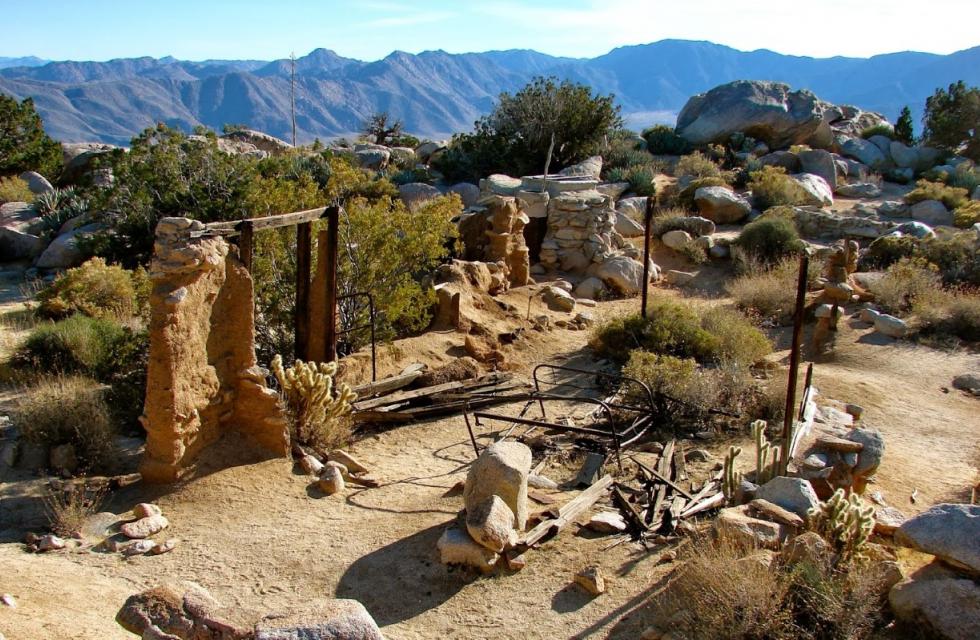An Experiment in Primitive Living - Ghost Mountain
Visit the silent ruins of one man’s dream:
An Experiment in Primitive Living - Ghost Mountain
Today the South’s home, called by them Yaquitepec (YAKeete-PECK), lies in ruins—crumbling adobe walls, the frame for an arched doorway, a rusted bed frame, and cement and barrel cisterns once used to catch seasonal rainfall. All that remains of South’s utopian dream.
A one-mile trail at the foot of Ghost Mountain in Blair Valley, off Highway S-2, climbs 1,200 feet to the site. The Souths had named the mountain for the “thin, ghostly trails” that led to the obscure ridge where they built their home. The short Ghost Mountain Trail visits their old homestead, climbing gently through a series of switchbacks to the mountaintop. In spring, the ocotillos and yuccas put on a colorful show.
When most people visualize living off the land, the first thing they’d want handy is a good water supply. Not so with the 1930s-40s artist and writer Marshal South, who decided to homestead on Anza-Borrego’s Ghost Mountain. South and his wife built an adobe home on top of the arid mountain and lived there with their three children for 17 years. The family tried to live simply by emulating the spartan style of early Native Americans, inventing systems for storing precious rainfall, tending a vegetable garden, and harvesting seeds and fruits from desert plants. Marshal’s monthly articles and Tanya’s poetry in Desert Magazine chronicled life in the arid paradise for a growing national audience. The family survived the Great Depression and World War II, but isolation and betrayal eventually took their toll, the family split up and left the mountain in 1947.
Watch this feature-length documentary about this interesting family:
The Ghost Mountain Experiment a documentary made by John McDonald
The film can be streamed and downloaded at GhostMountainMovie.com
